Transverse Humeral Ligament
Table of Contents
Introduction
The transverse humeral ligament is a fibrous band that runs horizontally across the top of the shoulder joint, connecting the greater and lesser tubercles of the humerus bone. It forms a roof over the bicipital groove, which houses the long head of the biceps tendon.
The primary function of this ligament is to hold the biceps tendon in place and prevent it from dislocating or slipping out of the groove during arm movements. The transverse humeral ligament is an essential structure in the shoulder joint and plays a crucial role in maintaining its stability and function. Injuries to this ligament can result in biceps tendon instability and shoulder pain.
Structure of the Transverse Humeral Ligament
The transverse humeral ligament is a thin, flat band of connective tissue that runs horizontally across the top of the shoulder joint. It is located just above the humeral head and extends from the greater tubercle to the lesser tubercle of the humerus bone.
The ligament is made of dense collagen fibers that are set in a parallel fashion. These fibers provide strength and stability to the ligament, allowing it to withstand the forces generated during arm movements.
At its medial and lateral edges, the transverse humeral ligament is attached to the bony prominences of the greater and lesser tubercles, respectively. In the center, it forms a roof over the bicipital groove, which is a shallow depression on the front of the humerus bone.
The bicipital groove houses the long head of the biceps tendon, which originates from the supraglenoid tubercle of the scapula and runs down the front of the arm. The transverse humeral ligament acts as a retinaculum, holding the biceps tendon in place and preventing it from dislocating or slipping out of the groove during arm movements.
The transverse humeral ligament is an essential structure in the shoulder joint and plays a crucial role in maintaining its stability and function. Injuries to this ligament can result in biceps tendon instability and shoulder pain.
Functions of the Transverse Humeral Ligament
The transverse humeral ligament serves several important functions in the shoulder joint.
Firstly, it acts as a protective roof over the bicipital groove, which helps to prevent the long head of the biceps tendon from becoming impinged or pinched during arm movements. This is particularly important during overhead activities, such as throwing or reaching, where the biceps tendon is under increased tension and more susceptible to injury.
Secondly, the transverse humeral ligament acts as a retinaculum, holding the biceps tendon in place and preventing it from dislocating or slipping out of the groove. This is important for maintaining the stability and function of the biceps muscle, which is a key muscle involved in shoulder and arm movements.
Finally, the transverse humeral ligament provides additional support and stability to the shoulder joint by reinforcing the attachment of the greater and lesser tubercles of the humerus bone. This helps to prevent excessive movement or displacement of the humeral head during arm movements, which could otherwise lead to shoulder instability or dislocation.
Overall, the transverse humeral ligament plays a crucial role in maintaining the stability and function of the shoulder joint, particularly with respect to the biceps tendon and its associated muscles. Injuries to this ligament can result in biceps tendon instability and shoulder pain, which can significantly impact a person’s ability to perform daily activities and sports.
Blood supply of the Transverse Humeral Ligament
The blood supply to the transverse humeral ligament comes from branches of the anterior and posterior circumflex humeral arteries. These arteries arise from the axillary artery, which is a major blood vessel that runs through the armpit.
The anterior circumflex humeral artery runs along the anterior aspect of the humerus bone and gives off branches to supply the ligament. The posterior circumflex humeral artery runs along the posterior aspect of the humerus bone and also gives off branches to supply the ligament.
In addition to these arteries, there are also small branches from the suprascapular artery and subscapular artery that contribute to the blood supply of the ligament.
The blood supply to the transverse humeral ligament is important because it provides oxygen and nutrients to the ligament, which helps to maintain its structural integrity and function. Without adequate blood supply, the ligament may become weakened or damaged, leading to instability or dysfunction of the shoulder joint.
Injuries of the Transverse Humeral Ligament
Activities that can cause injuries to the transverse humeral ligament include:
- Repetitive overhead motions: Athletes who engage in repetitive overhead motions such as throwing a baseball or serving a tennis ball are at risk of developing a transverse humeral ligament injury due to the constant stress placed on the shoulder joint.
- Weightlifting: Weightlifting exercises that involve lifting heavy weights above the head can also put a lot of strain on the shoulder joint and increase the risk of a ligament injury.
- Trauma: A direct blow to the shoulder or a fall onto an outstretched arm can cause a transverse humeral ligament injury.
- Aging: As we age, our tendons and ligaments become less elastic and more prone to risk of injury. This means that older individuals may be more susceptible to a transverse humeral ligament injury even with minor trauma or overuse.
- Poor posture: Poor posture can cause imbalances in the muscles surrounding the shoulder joint, leading to increased stress on the ligaments and an increased risk of injury.
So in general, it is important to be aware of the activities that can cause a transverse humeral ligament injury and take steps to prevent injury, such as using the proper technique during exercise and maintaining good posture. If you do experience any symptoms of a shoulder injury, it is important to seek medical attention promptly to prevent further damage and ensure proper treatment.
Symptoms of the Transverse Humeral Ligament injuries
The symptoms of a transverse humeral ligament injury can vary depending on the severity of the injury. Some common symptoms include:
- Pain: Pain is the most common symptom of a transverse humeral ligament injury. The pain may be sharp or dull and may be felt in the shoulder, upper arm, or elbow.
- Weakness: A transverse humeral ligament injury can cause weakness in the shoulder and arm, making it difficult to lift objects or perform overhead activities.
- Stiffness: Stiffness in the shoulder joint may occur due to inflammation and swelling caused by the injury.
- Clicking or popping: Some people may experience clicking or popping sensations in the shoulder joint when moving their arm.
- Numbness or tingling: In some cases, a transverse humeral ligament injury may cause numbness or tingling in the arm or hand.
If it left untreated, a transverse humeral ligament injury can result in chronic shoulder pain and instability. It is essential to take medical treatment if you experience any of these symptoms to prevent further damage and ensure proper treatment.
Diagnosis of the Transverse Humeral Ligament Injury
The diagnosis process for a transverse humeral ligament injury typically involves a combination of physical examination, medical history, and imaging tests.
Physical Examination: A healthcare professional will perform a thorough physical examination of the shoulder joint, including Yergason’s test, to assess for any pain, instability, or weakness. They may also palpate the area around the shoulder joint to check for any swelling or tenderness.
Medical History: The healthcare professional will also ask the patient about their medical history, including any previous injuries or surgeries to the shoulder joint, as well as any symptoms they may be experiencing such as pain, weakness, or instability.
Imaging Tests: Imaging tests such as X-rays, ultrasound, or MRI may be ordered to confirm a diagnosis of a transverse humeral ligament injury. X-rays can help rule out other conditions such as fractures or dislocations, while ultrasound can provide a detailed image of the soft tissues in the shoulder joint. MRI is typically the most accurate imaging test for diagnosing a transverse humeral ligament injury, as it can provide detailed images of the ligament and surrounding structures.
Treatment for a transverse humeral ligament injury may include rest, physical therapy, and in some cases, surgery. It is very crucial to take prompt medical treatment if you are feeling shoulder pain or instability, as early diagnosis and treatment can help in preventing further damage and improve outcomes.
Special test
Yergason’s test
Yergason’s test is a physical examination maneuver used to assess the integrity of the transverse humeral ligament and biceps tendon. It is commonly used in the diagnosis of shoulder pain and instability.
To perform Yergason’s test, the patient is seated with their arm flexed at the elbow and their forearm resting on a table or lap. The examiner then stands behind the patient and places one hand on the patient’s wrist and the other hand on the patient’s elbow.
The examiner then instructs the patient to rotate their forearm outward against resistance while keeping their elbow at their side. The examiner applies resistance to the patient’s wrist to prevent movement of the arm. If the transverse humeral ligament and biceps tendon are intact, the patient should be able to rotate their forearm outward without any pain or discomfort.
If there is pain or discomfort during the maneuver, it may indicate a tear or injury to the transverse humeral ligament or biceps tendon. In some cases, a popping or clicking sensation may also be felt during the maneuver, which can indicate instability in the shoulder joint.
Yergason’s test is a simple and non-invasive way to examine the continuity of the transverse humeral ligament and biceps tendon. However, it should be performed by a trained healthcare professional and should not be used as the sole diagnostic tool for shoulder injuries. Other imaging tests such as MRI may be necessary to confirm a diagnosis.
Treatment of Transverse Humeral Ligament Injury
Conservative treatment
Conservative treatment for a transverse humeral ligament injury typically involves rest, physical therapy, and pain management.
Rest: Resting the affected shoulder joint is important to allow the ligament to heal. This may involve avoiding activities that aggravate the injury, such as overhead lifting or throwing.
Physical Therapy: Physical therapy can help improve range of motion, strength, and stability in the affected shoulder joint. A physical therapist may recommend exercises to strengthen the rotator cuff muscles and improve shoulder stability. They may also use modalities such as heat, ice, or electrical stimulation to help in reducing pain and inflammation.
Pain Management: Pain management may involve over-the-counter pain medications such as acetaminophen or nonsteroidal anti-inflammatory drugs (NSAIDs). In some cases, a healthcare professional may prescribe stronger pain medications or corticosteroid injections to help manage pain and inflammation.
So that is very crucial to follow a healthcare professional’s guidance for conservative treatment and avoid activities that may aggravate the injury. If conservative treatment is not effective, surgery may be necessary to repair or reconstruct the transverse humeral ligament.
Physiotherapy treatment
Transverse humeral ligament injury is a condition that affects the shoulder joint, causing pain and a limited range of motion. Physical therapy is an effective conservative treatment option for this condition. The physiotherapy treatment for transverse humeral ligament injury typically involves the following steps:
Assessment: The first step in physiotherapy treatment is to assess the extent of the injury and identify any contributing factors. The physical therapist will perform a thorough evaluation of the shoulder joint, including range of motion, strength, and stability.
Pain Management: The physical therapist may use modalities such as ice, heat, or electrical stimulation to help reduce pain and inflammation. They may also suggest over-the-counter pain medications such as acetaminophen or nonsteroidal anti-inflammatory drugs (NSAIDs).
Range of Motion Exercises: Range of motion exercises help improve flexibility and mobility in the affected shoulder joint. The physical therapist may use passive range of motion exercises to gently move the joint through its full range of motion, or active range of motion exercises that involve the patient actively moving the joint.
Strengthening Exercises: Strengthening exercises help improve the strength and stability of the shoulder joint. The physical therapist may suggest exercises to strengthen the rotator cuff muscles and other muscles surrounding the shoulder joint.
Manual Therapy: Manual therapy techniques such as massage, joint mobilization, and stretching can help improve the range of motion and reduce pain and stiffness in the affected shoulder joint.
Functional Training: Functional training involves exercises that mimic everyday activities to help improve the patient’s ability to perform these activities without pain or limitation.
Education: The physical therapist will educate the patient on correct body mechanics and posture to help in preventing further injury and promote healing.
So in the end, physiotherapy treatment for transverse humeral ligament injury is a comprehensive approach that addresses pain management, range of motion, strength, stability, and functional ability. It is important to follow the physical therapist’s recommendations and continue with exercises and home care to promote healing and prevent further injury.
Risk factors of the transverse humeral ligament
The transverse humeral ligament is a band of connective tissue that runs across the top of the shoulder joint, holding the biceps tendon in place. Injury to this ligament can occur due to various risk factors, including:
- Repetitive Overuse: Overuse of the shoulder joint due to activities such as throwing, lifting, or reaching overhead can cause wear and tear on the transverse humeral ligament, leading to injury.
- Trauma: Direct trauma to the shoulder joint, such as a fall or impact, can cause damage to the ligament.
- Age: As we age, the ligaments and other connective tissues in our body become less elastic and more prone to injury.
- Poor Posture: Poor posture can put undue stress on the shoulder joint, leading to overuse and injury to the transverse humeral ligament.
- Muscle Imbalances: Weakness or tightness in certain muscles around the shoulder joint can cause imbalances that put extra stress on the ligament.
- Genetics: Some people may be more prone to ligament injuries due to genetic factors that affect the strength and elasticity of their connective tissues.
- Medical Conditions: Certain medical conditions such as rheumatoid arthritis or hypermobility syndrome can increase the risk of ligament injuries.
We have to identify and address these risk factors in order to prevent injury to the transverse humeral ligament and promote overall shoulder health.
How to prevent injuries of the transverse humeral ligament
To prevent injury to the transverse humeral ligament, it is important to take measures to reduce the risk factors mentioned above. Here are some ways in order to prevent injury:
- Warm-up and Stretching: Before engaging in any physical activity that involves the shoulder joint, it is important to warm up and stretch properly. This can help improve flexibility and reduce the risk of overuse injuries.
- Strengthening Exercises: Strengthening the muscles around the shoulder joint can help improve stability and reduce the risk of imbalances that can lead to ligament injuries. Exercises such as shoulder presses, rows, and lateral raises can be helpful.
- Proper Posture: Maintaining good posture can help reduce stress on the shoulder joint and prevent overuse injuries. It is important to sit and stand up straight, with shoulders relaxed and down.
- Avoid Overuse: Avoid repetitive activities that put undue stress on the shoulder joint, such as throwing or lifting heavy weights overhead. If you must engage in these activities, take frequent breaks and use proper form.
- Use Proper Equipment: When engaging in physical activity, use proper equipment such as supportive shoes or braces to reduce the risk of injury.
- Rest and Recovery: Allow some time for your body to rest and recover after physical activity. This can help prevent overuse injuries and allow your ligaments and other connective tissues to heal.
- Seek Medical Attention: If you experience pain or discomfort in your shoulder joint, seek medical attention right away. Early intervention can help prevent further damage to the ligament and promote healing.
FAQ
The transverse humeral ligament is a band of connective tissue that runs across the top of the shoulder joint, holding the long head of the biceps tendon in place.
Injury to the transverse humeral ligament can be caused by repetitive overhead movements, overuse, poor posture, and imbalances in the muscles around the shoulder joint.
Symptoms of a transverse humeral ligament injury may include pain or discomfort in the shoulder joint, weakness in the arm, and a popping or snapping sensation when moving the arm.
A transverse humeral ligament injury can be diagnosed through a physical exam, imaging tests such as an MRI or ultrasound, and sometimes through arthroscopy (a minimally invasive surgical procedure).
Treatment for a transverse humeral ligament injury may include rest, ice, physical therapy, and in some cases, surgery to repair or release the ligament.
Yes, a transverse humeral ligament injury can be prevented by warming up and stretching properly, strengthening the muscles around the shoulder joint, maintaining good posture, avoiding overuse, using proper equipment, allowing time for rest and recovery, and seeking medical attention if experiencing pain or discomfort in the shoulder joint.

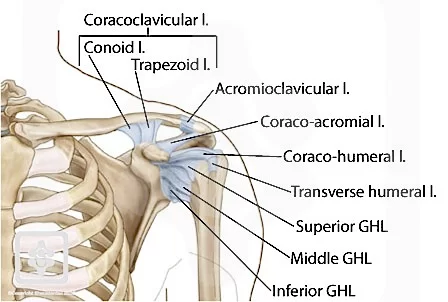
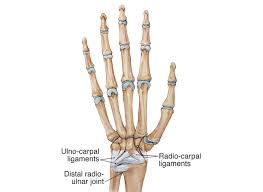
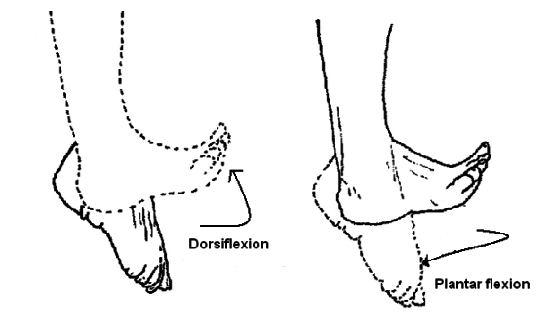

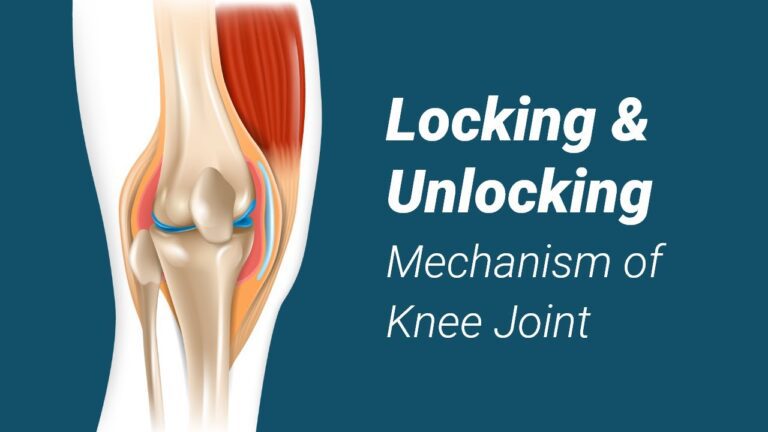
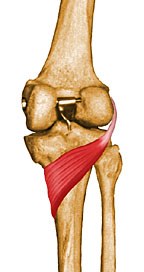
One Comment